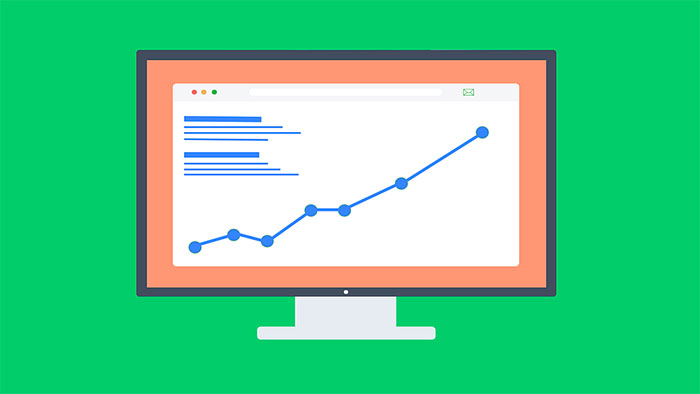Search engine optimization (SEO) is a dynamic field that requires continuous improvement and adaptation to stay ahead of the competition. One valuable tool that can enhance your SEO efforts is a backlink index checker. By effectively incorporating the data from this tool into your workflow, you can make informed decisions, optimize your backlink profile, and improve your website’s search engine rankings. In this article, we will explore how to incorporate backlink index checker data into your SEO workflow for continuous improvement.
To start, make it a regular practice to analyze the data from your backlink index checker. Set a frequency that works for you, whether it’s weekly, monthly, or quarterly. This will help you stay updated on changes in your backlink profile and identify any patterns, issues, or opportunities that arise. Regular analysis of backlink data allows you to make informed decisions based on real-time information.

Table of Contents
Identify and Remove Toxic Backlinks
One crucial aspect of maintaining a healthy backlink profile is ensuring that you have high-quality links pointing to your website. Use the data from the backlink Google index checker to identify toxic or spammy backlinks. These low-quality links can harm your website’s SEO and reputation. Take action to remove these backlinks by reaching out to the website owners or using Google’s Disavow Tool. Regularly monitoring and removing toxic links will improve the overall health of your backlink profile.
Monitor Competitor Backlinks
To stay competitive in your SEO efforts, it’s important to keep an eye on the backlink profiles of your competitors. The backlink index checker can provide valuable insights into their backlink strategies. Analyze their backlinks and identify potential backlink opportunities for your own website. Look for high-quality websites that are linking to your competitors and consider reaching out to them to request backlinks. Monitoring competitor backlinks allows you to uncover new link-building opportunities and strengthen your backlink profile.
Track Your Link-Building Efforts
When implementing link-building strategies, utilize the data from the index checker to track the progress and success of your efforts. Monitor the number of acquired backlinks, the quality of those backlinks, and the overall impact on your search engine rankings. This information will help you evaluate the effectiveness of your link building strategies and make adjustments if necessary. Regularly tracking your link building efforts allows you to refine your approach and focus on tactics that deliver the best results.
Identify New Link Building and Optimize Anchor Texts
A backlink index checker can help you identify websites that are linking to your competitors but not to your own website. These “missed” opportunities present a chance to build relationships with relevant websites in your industry and acquire valuable backlinks. Utilize the data from the index checker to identify these opportunities and consider reaching out to these websites to request backlinks. Building relationships and securing relevant backlinks from these sources can significantly boost your online visibility and authority.
The data from the index checker can also provide insights into the anchor texts and keywords used in your backlinks. Ensure that they are diverse, relevant, and strategically optimized for your target keywords. If you identify any over-optimized or spammy anchor texts, take steps to adjust them. Optimizing your anchor texts and keywords will enhance the relevance, authority, and SEO performance of your backlinks.
Monitor Tracking and Indexing
Keep a close eye on the tracking and indexing status of your backlinks using the index checker. Ensure that search engines have successfully indexed your backlinks. If you notice any issues with tracking or indexing, investigate the cause and take appropriate measures to rectify them. Proper tracking and indexing ensure that your backlinks are recognized by search engines and contribute to your website’s SEO efforts.
Use the index checker data to measure the impact of your backlinks on your search engine rankings, organic traffic, and website authority. Analyze the correlation between the acquisition of new backlinks and improvements in your SEO metrics. This analysis will help you understand the influence of your backlink profile on your overall SEO performance. By determining the impact of your backlinks, you can focus on strategies that yield the best results and continuously optimize your SEO efforts.

Incorporate Findings into Your SEO Strategy
Based on the insights gained from the bulk backlink checker, incorporate findings into your SEO strategy. Adjust your link-building tactics, optimize anchor texts, prioritize certain high-quality websites for outreach, and refine your overall backlink profile. Regularly review and adapt your SEO strategy to leverage the data and drive continuous improvement. By incorporating the findings from the index checker into your SEO strategy, you can take proactive steps to enhance your website’s organic visibility and search engine rankings.
In conclusion, a backlink index checker is a powerful tool that can greatly enhance your SEO efforts. By effectively incorporating the data from this tool into your workflow, you can make informed decisions, identify opportunities, and continuously improve your backlink profile. Regularly analyze backlink data, remove toxic backlinks, monitor competitor backlinks, track your link-building efforts, optimize anchor texts and keywords, identify new link-building opportunities, monitor tracking and indexing, measure the impact of your backlinks, and incorporate the findings into your SEO strategy. By following these steps, you can leverage the power of a backlink index checker to continuously refine and improve your SEO performance











Leave a Reply